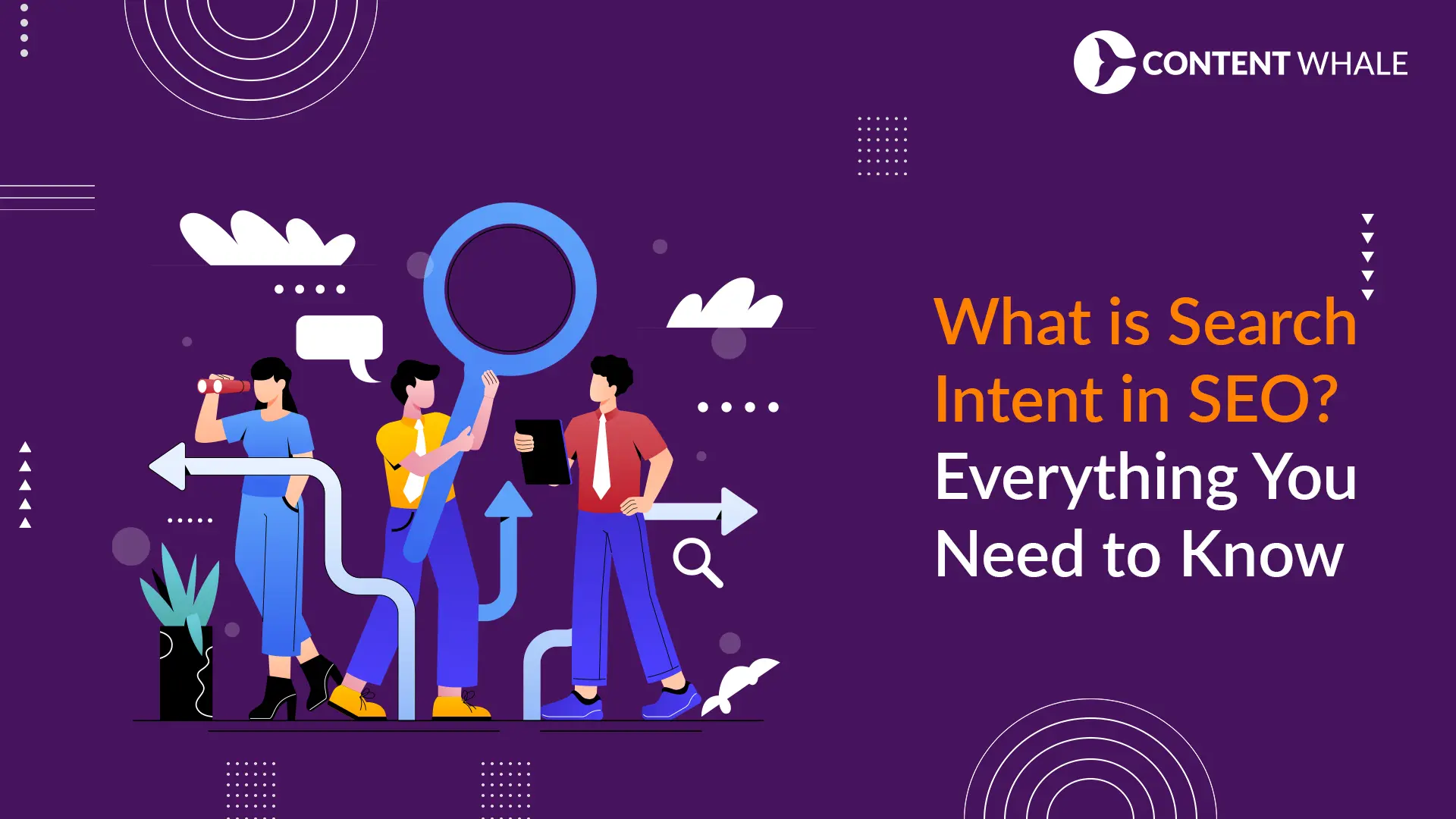Quick Summary
Understanding search intent is crucial for improving your SEO strategy. By grasping the different types of search intent—informational, navigational, transactional, and commercial investigation—you can better align your content with user expectations. Optimizing your content based on user intent enhances user satisfaction and boosts your site’s visibility on search engines. Effective SEO search intent strategies ensure that your content matches what users are searching for, driving more organic traffic and increasing conversion rates. Embracing these principles can significantly improve your website’s performance and user engagement.
Ever wondered why some content ranks higher on search engines than others? Search intent, also known as user intent, refers to the purpose behind a user’s search query. Understanding search intent is essential for effective SEO, as it helps tailor content to meet users’ needs, improving both user satisfaction and search engine rankings. According to recent data, 68% of online experiences begin with a search engine, and Google captures 92.96% of this global traffic.
Optimizing for Google search intent involves aligning your content with the specific queries users input into search engines. This alignment ensures that your content is relevant and valuable to the searchers, increasing your chances of higher rankings and better engagement.
By focusing on SEO search intent and leveraging tools to understand keyword intent, businesses can create more effective content strategies. This approach not only drives organic traffic but also enhances conversion rates by addressing the exact needs of the users at various stages of their search journey
What Exactly is Search Intent?
Search intent, also referred to as user intent, is the primary goal a user has when entering a query into a search engine. It reflects what the user is trying to accomplish with their search, whether it’s seeking information, finding a specific website, making a purchase, or researching products before a purchase. Understanding search intent is fundamental to effective SEO, as it helps create content that directly addresses users’ needs and expectations.
There are several key aspects to consider when analyzing search intent. Firstly, identifying the intent behind keywords is crucial; this can range from informational to transactional queries. Secondly, understanding the different types of search intent allows for better content alignment. Lastly, optimizing content for Google search intent means ensuring that it meets the specific queries users are searching for, which improves both relevance and ranking potential.
By focusing on SEO search intent, businesses can enhance their content strategies, driving more targeted traffic and improving conversion rates.
Types of Search Intent

Understanding search intent is crucial for creating content that meets users’ needs and aligns with SEO search intent strategies. Here are the four primary types of search intent: informational, navigational, transactional, and commercial investigation. Each type represents a different user goal and requires a distinct content approach.
1. Informational Intent
Informational intent involves users seeking knowledge or answers to specific questions. These searches often start with “how,” “what,” “why,” or “who.” For example, queries like “how to make pasta” or “How to write and SEO-optimized blog?” indicate that the user wants detailed information or instructions. Optimizing for informational intent involves:
- Creating comprehensive, well-structured content: Provide clear answers and ensure the content is easily navigable.
- Ideal formats: Blog posts, tutorials, and how-to guides are perfect for this type of intent.
2. Navigational Intent
Navigational intent is when users aim to reach a specific website or page. These searches typically include brand or website names, such as “Facebook login” or “Content Whale” To optimize for navigational intent:
- Ensure your site is easily discoverable: Use clear branding and optimize your homepage and important landing pages.
- Rank well for branded keywords: Ensure your site appears at the top of search results for these queries.
3. Transactional Intent
Transactional intent indicates that users are ready to make a purchase or complete a specific action, like signing up for a service. Examples include “buy iPhone 12” or “Hire content writing services” To optimize for transactional intent:
- Focus on conversion: Include clear calls to action, detailed product descriptions, and an easy-to-navigate checkout process.
- Ensure a seamless user experience on product pages: This is crucial for converting high-intent searches.
4. Commercial Investigation Intent
Commercial investigation intent is when users are researching products or services before making a purchase. They might search for comparisons or reviews, such as “best smartphones 2024” or “best content writing services in India” To optimize for this intent:
- Create detailed comparison articles, reviews, and buying guides: Help users make informed decisions.
- Include pros and cons, detailed features, and comparisons to similar products: This can effectively meet this intent.
By understanding and optimizing for these different types of search intent, you can create content that not only ranks well but also engages and converts users effectively.
How to Identify User Intent

Identifying user intent from keywords is essential for crafting content that aligns with what users are searching for. Here are effective methods to determine search intent:
1. Analyze Keywords
Start by analyzing the keywords themselves. Look for specific modifiers that indicate intent, such as “buy,” “how,” “best,” “review,” or “price”. These modifiers can help you understand whether the intent is informational, navigational, transactional, or commercial investigation.
2. Use SEO Tools
Leverage SEO tools like Google Analytics, SEMrush, and Ahrefs. These tools can provide insights into keyword intent by showing search volumes, competition levels, and the types of content that rank for these keywords. Tools like the SEMrush Keyword Magic Tool and Google Ads Keyword Planner are particularly useful for identifying and categorizing keyword intent.
3. Examine SERPs
Analyzing Search Engine Results Pages (SERPs) for your target keywords can reveal the predominant intent behind a search query. Look at the types of pages that rank highly—whether they are informational articles, product pages, or comparison sites—to gauge the SEO search intent.
4. Consider User Behavior
Use Google Analytics to monitor metrics such as bounce rates and session durations. High bounce rates can indicate a mismatch between your content and the user’s search intent. Adjusting content to better match user expectations can improve engagement and conversions.
By utilizing these methods, you can effectively determine keyword intent and optimize your content to meet the needs of your audience, enhancing your SEO strategy and user experience.
Optimizing Content Based on Search Intent
Optimizing content based on search intent is crucial for ensuring your website meets the needs of users and ranks well on search engines. Here are effective strategies to align your content with user intent:
1. Create Comprehensive Content
Ensure your content thoroughly addresses the topic. Research what competitors are doing and aim to provide more in-depth and valuable information. Cover all relevant questions and subtopics users might have about the subject.
2. Use Appropriate Content Formats
Match your content format to the types of search intent. If users are looking for instructional content, create how-to guides or tutorials. For transactional intent, focus on detailed product pages with clear calls to action. Blog posts and listicles work well for informational and commercial investigation intents.
3. Optimize On-Page Elements
Optimize titles, meta descriptions, and headers to reflect keyword intent accurately. Use concise, keyword-rich URLs and ensure your content is easily readable with short paragraphs and clear subheadings. Also, incorporate E-E-A-T (Experience, Expertise, Authoritativeness, Trustworthiness) to boost your content’s credibility.
4. Leverage SEO Tools
Utilize tools like SEMrush, Ahrefs, and Google Analytics to analyze keywords and SERPs. These tools can help identify the predominant search intent and guide your content creation to better match user queries.
5. Update and Refine Content
Regularly update your content to keep it relevant and accurate. Monitor performance metrics like bounce rates and session durations to identify content that may need adjustments to better match SEO search intent.
By implementing these strategies, you can create content that aligns with Google search intent, improving both user satisfaction and search engine rankings.
Wrapping Up

Understanding and leveraging search intent is vital for any successful SEO strategy. By focusing on user intent, businesses can create content that aligns with what users are searching for, thereby improving relevance and engagement.
Aligning content with keyword intent helps in providing the right answers to user queries, which can significantly boost search engine rankings and user satisfaction.
Implementing strategies that consider the different types of search intent—informational, navigational, transactional, and commercial investigation—ensures that content meets the specific needs of users at various stages of their search journey.
Regularly updating and optimizing content based on Google search intent trends helps maintain its relevance and effectiveness.
Incorporating these insights into your SEO search intent strategy not only drives organic traffic but also enhances user experience and conversion rates.
Staying ahead of SEO trends and continuously refining your approach will ensure sustained success in a competitive digital environment.
For expert assistance in optimizing your content strategy based on search intent, consider partnering with Content Whale.
Our team of SEO specialists can help you create content that not only ranks well but also resonates with your audience, driving engagement and conversions. Contact us today to learn more about our services!
FAQs about Search Intent
What is search intent in SEO?
Search intent refers to the purpose behind a user’s search query. It is crucial for SEO because it helps in creating content that aligns with what users are searching for. By understanding user intent, you can tailor your content to meet specific needs, enhancing both relevance and ranking potential.
How can I determine the search intent of a keyword?
Determining keyword intent involves analyzing the keywords and modifiers within search queries. Tools like Google Analytics, SEMrush, and Ahrefs can provide insights into search terms and user behavior. Additionally, examining SERPs can help identify the predominant types of search intent associated with a keyword.
Why is understanding user intent important for SEO?
Understanding user intent is vital because it ensures that your content meets the needs of users, which improves engagement and satisfaction. By aligning content with Google search intent, you can achieve better rankings, drive more targeted traffic, and increase conversion rates.
What are the types of search intent?
The four primary types of search intent are:
- Informational Intent: Users seek knowledge or answers to specific questions.
- Navigational Intent: Users aim to reach a specific website or page.
- Transactional Intent: Users are ready to make a purchase or complete an action.
- Commercial Investigation Intent: Users are researching products or services before making a decision.
How does search intent impact content optimization?
SEO search intent impacts content optimization by guiding how you structure and present your content. By focusing on user intent, you can create more relevant and valuable content. Optimizing for search intent involves using appropriate content formats, updating metadata, and regularly refreshing content to keep it relevant and competitive.





